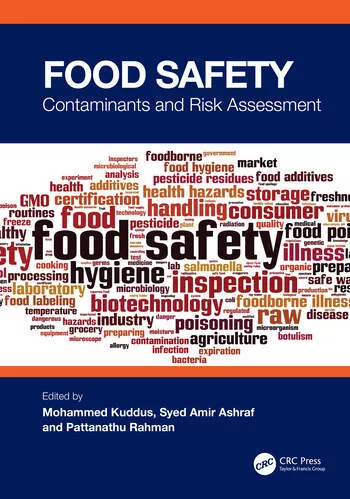Half of U.S. Drinking Water Contaminated by Toxic PFAS, Reports USGS

Image credit: LuAnn Hunt via Unsplash
A nationwide study conducted by the U.S. Geological Survey (USGS) has revealed that nearly half of all U.S. drinking water is contaminated by per- and polyflouralkyl substances (PFAS), also known as “forever chemicals” due to their indefinite persistence in the environment and human body. Dietary exposure to PFAS is an issue of increasing concern due to the growing body of evidence regarding the chemicals’ harm to human health, having been linked to metabolic and thyroid harm, as well as cancer, liver damage, increased cholesterol, and immune effects.
The study’s authors stress that, based on their findings, there is a need for or point-of-use tap water monitoring, with an emphasis on unmonitored private wells and underserved communities on small community water supplies.
For the study, researchers conducted a national reconnaissance to compare human PFAS exposures in unregulated private wells and regulated public-supply tap water. From 2016–2021, a total of 716 tap water samples were collected from residences, businesses, and drinking water treatment plants across the U.S., 409 of which were collected at point-of-use from 155 unregulated private wells and 252 regulated public supply locations in all 50 states, Washington D.C., Puerto Rico, and the U.S. Virgin Islands. Repeated sampling was conducted at three locations (two private wells and one public supply) to assess temporal changes in PFAS concentrations and profiles. PFAS data from an additional 307 tap water samples (112 private wells and 195 public supply) collected as part of the USGS point-of-use tap water research effort between 2016 and 2021 were also included in the present study’s analysis.
PFAS samples were analyzed by three different laboratories for the study: the U.S. Environmental Protection Agency (EPA) National Exposure Research Laboratory in 2016, the Colorado School of Mines in 2017–2018, and the USGS National Water Quality Laboratory in 2019–2021. The three laboratories determined PFAS concentrations and compared the data with land-use and potential-source metrics to explore drivers of contamination.
Overall, modeling suggested at least 45 percent of US drinking water samples are contaminated by at least one type of PFAS. Additionally, PFAS in tap water samples exceeded benchmarks and U.S. proposed PFAS regulations in private and public supply. Modeling also pointed to point-of-use tap water exposure to individual PFAS being more closely associated with the type of PFAS sources (e.g., industry, airport, wastewater, and etc., which are typically located at the edge of urban development and not in the highest residentially developed areas), rather than the number of nearby potential PFAS sources. Based on the data, drinking water exposures may be more common in the Great Plains, Great Lakes, Eastern Seaboard, and Central/Southern California regions than other areas of the U.S.
Consistent with other studies and large datasets focused on public-supply tap water, at least one PFAS was observed in 30 percent (237 of the 716) of the tap water samples collected throughout the U.S. Additionally, approximately 4 percent of U.S. drinking water treatment plants tested had detectable PFAS, but the breadth of contamination was likely missed due to high detection limits (10–90 nanograms per liter [ng/L], depending on individual PFAS) and a limited number of PFAS analyzed.
The study detected 17 PFAS at least once and, apart from PFPrS, all detected PFAS were analyzed in more than 600 samples. Reporting limits for PFAS observed in the study varied by laboratory and ranged from 0.1 to 20 ng/L. The most frequently detected PFAS analyzed by all laboratories included PFBS (16 percent), PFHxS (15 percent), and PFOA (14 percent). The number of individual PFAS observed ranged from one to nine, with a median of two, and detected concentrations ranged from 0.025–319 ng/L, and corresponding cumulative PFAS concentrations (sum of 16 detected PFAS) ranged from 0.348–346 ng/L.
Looking for quick answers on food safety topics?
Try Ask FSM, our new smart AI search tool.
Ask FSM →
At least one PFAS was detected in 20 percent (55 of 269) of private-well and 40 percent (182 of 447) of the public supply samples collected throughout the U.S. A similar pattern was reported in groundwater from the eastern U.S., in which 60 percent of public supply wells and 20 percent of monitoring wells contained at least one PFAS. Based on model predictions, the probability of not detecting PFAS above the scientists’ detection limits ranged from approximately 25 percent in urban centers or areas with a known history of PFAS contamination, to 75 percent in rural areas.
Across all data, the probability of detecting at least one PFAS in a water sample was approximately 18 percent, with a marked decrease in probability associated with increasing number of detected compounds. No differences were observed between public supply and private well samples.
In March 2023, EPA proposed new maximum contaminant levels (MCLs) for PFOA and PFOS (4 ng/L) as part of the National Primary Drinking Water Standards Rule. Proposed MCLs for PFOA and PFOS were exceeded in 6.7 percent and 4.2 percent of all tap water samples, respectively, but were exceeded in 48 percent (48 of 99) and 70 percent (30 of 43) of tap water samples when detected. The proposed MCL for PFOS was below the reporting limit for two of the three laboratories that took part in the study, and the reporting limit for PFOA was above the proposed MCL for only one laboratory; therefore, the researchers state that their estimates of samples exceeding EPA’s proposed MCL should be considered conservative.
Looking forward, to fully understand exposure and adequately determine risk to human health, the researchers call for continued emphasis on 1) integrating geospatial datasets with PFAS data broadly to identify vulnerable regions/subpopulations, 2) expanding monitoring to include rural small-system and private well-dependent communities, and 3) expanding target and non-target analysis methods, particularly in drinking water monitoring programs in the U.S. and globally.









